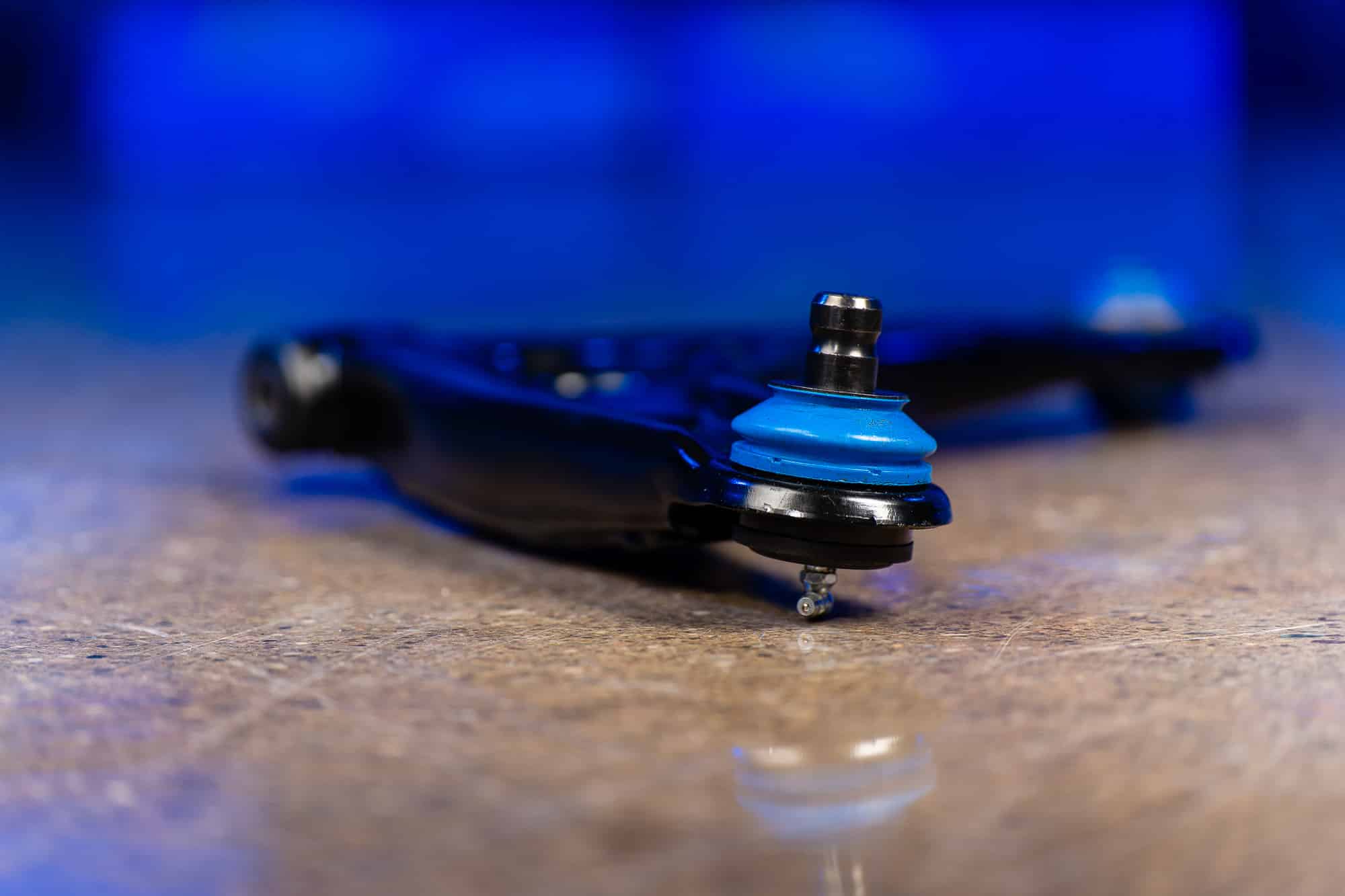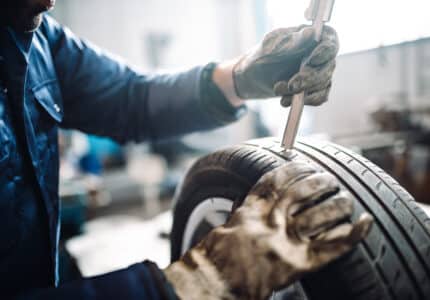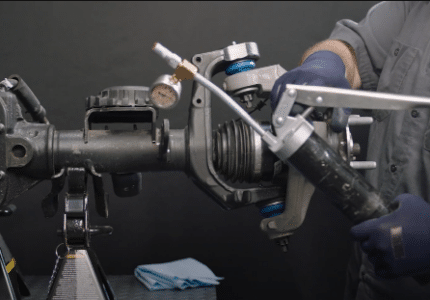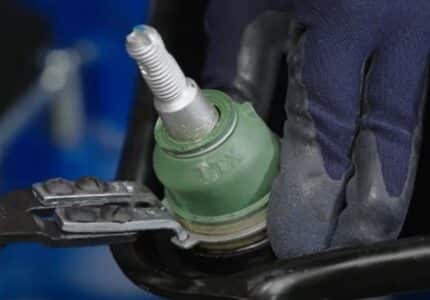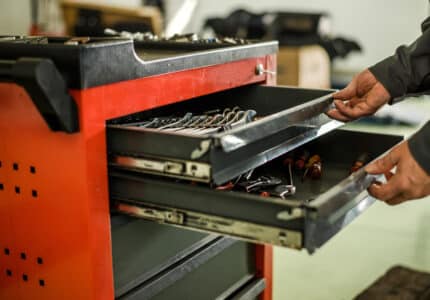ALL ABOUT DUST BOOTS
Dust boots provide protective cover that safeguards ball joint internals from dust, debris and moisture ingress. Once these contaminants get in, they can foul up and corrode internal components, compromising ball joint function and service life.
Dust boots come in many forms, but they all have a big job to do. To take a deep dive into dust boot features, designs and maintenance, read on for all you need to know.
What Dust Boots Do
Typically made of a malleable elastomer, dust boots serve two primary functions: keeping the bad stuff out and the good stuff in.
Keeping the Bad Out
 Ensuring internal components remain free of dirt and debris is extremely important to the service life of ball and socket joints. Dirt and other foreign materials can contaminate grease, reducing its effectiveness and even creating an abrasive material. Moisture can also lower the effectiveness of grease and lead to corrosion, completely compromising the longevity of the ball joint.
Ensuring internal components remain free of dirt and debris is extremely important to the service life of ball and socket joints. Dirt and other foreign materials can contaminate grease, reducing its effectiveness and even creating an abrasive material. Moisture can also lower the effectiveness of grease and lead to corrosion, completely compromising the longevity of the ball joint.
Keeping the Good In
The second function of dust boots is to keep the grease in the ball joint. Having good, clean lubricant available to the moving components is imperative to how long that component will function.
Dust Boot Features
Seals
 Dust boots seal against ball and socket joints in two areas. The first is against the housing of the joint. This seal is the larger of the two and is typically a static seal, meaning the mating parts do not move relative to one another.
Dust boots seal against ball and socket joints in two areas. The first is against the housing of the joint. This seal is the larger of the two and is typically a static seal, meaning the mating parts do not move relative to one another.
The second sealing point is at the ball pin end, where the dust boot must seal against not only the ball pin but also the mating component, such as a steering knuckle or control arm. This sealing area is considered dynamic since the ball pin and mating component will rotate and move against the edges of the boot.
Other features
Greaseable ball joints will usually feature a relief that allows old grease to be expelled, making room for the fresh grease to be pumped in. Grease reliefs are available in a few different designs, including a one-way valve and a ball pin seal notch.
Dust Boot Materials
 Everything from leather to foam and the more current polymers and chloroprene are used for dust boots. Whatever the material, it must be malleable enough to withstand the articulation of the joint and tough enough to withstand all the chemicals it interacts with.
Everything from leather to foam and the more current polymers and chloroprene are used for dust boots. Whatever the material, it must be malleable enough to withstand the articulation of the joint and tough enough to withstand all the chemicals it interacts with.
Dust Boot Types and Designs
There are three areas to consider when designing a dust boot:

1. Static sealing area
2. Dynamic sealing area
3. Shape or profile of the boot
1. STATIC SEALING AREA
The static sealing area of a dust boot is where it interacts with the ball joint housing. Some of the most popular designs include:
Open Bottom (Hat Type): This dust boot is designed to fit loosely over the housing. Used on older vehicles, it relies on constant grease application to prevent contamination.
Boot Plate: This design provides a good seal but requires a lot of space. Additionally, the bolt plate can pinch the boot, creating a stress area prone to tearing.
Pressure Fit: This is a common type of closure method used on many joints. Some rely on the elasticity of the boot to stay on, while others may incorporate a steel spring encased within the boot lip. If not designed properly this boot does have the potential to slip off.
Spiral Ring: This is another closure method commonly used in today’s components. It does a good job of keeping the boot tight to the housing. If affixed too tightly, though, the ring may start to cut into the dust boot.
 Integri-Boot™: This is a superior seal design found on Mevotech TTX™ components. The dust boot is mechanically locked into place by the housing lamination, preventing contaminants from entering the component.
Integri-Boot™: This is a superior seal design found on Mevotech TTX™ components. The dust boot is mechanically locked into place by the housing lamination, preventing contaminants from entering the component.

Locking Boot: The patented TTX™ Locking Boot features an exclusive sealing design. It incorporates a metal locking ring vulcanized to the rubber boot. The locking ring permanently fixes the boot to the housing, creating a perfect seal and keeping out contaminants.
2. DYNAMIC SEALING AREA
The top of a dust boot must seal against the ball pin and, in most cases, the steering knuckle or control arm. This dynamic sealing area is critical and available in many different design types. The sealing edge against the ball pin is typically tight to prevent contamination or water intrusion, but it must also allow for the rotation of the ball pin to avoid binding or tearing.
 Premium replacement components, such as Mevotech’s Supreme and TTX™ lines of chassis parts and control arms, will feature multiple ridges, or lips, on the dynamic sealing points to make it harder for water or contaminants to get in.
Premium replacement components, such as Mevotech’s Supreme and TTX™ lines of chassis parts and control arms, will feature multiple ridges, or lips, on the dynamic sealing points to make it harder for water or contaminants to get in.
3. BOOT SHAPE/PROFILE
Dust boots must be designed to accommodate the ball joint’s articulation requirements, while ensuring a proper seal with no rubbing or pinching.
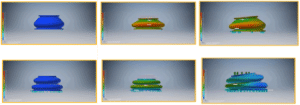
Always taking the vehicle’s suspension travel and design into consideration, Mevotech tests every dust boot profile to ensure it is the correct shape and size for the intended application.
Maintenance and Care
√ Don’t overfill ball joint dust boots. Overfilling with grease can cause the boot to balloon out, where it may rub against other components. It also stretches out the material, setting it up to crack and fail.
√ Only use a grease needle and puncture a dust boot as a last resort (and if the part is going to be changed soon). Intentionally puncturing a dust boot will allow water and contaminants into the joint.
√ Keep the dust boot clean. If the joint is the greaseable type, always wipe away any excess grease that may have come out of the grease relief during servicing. Accumulation of grease around the component can create a failure-prone environment.
Summary
Overall, when inspecting a vehicle’s chassis, it’s important to look at the condition of the many dust boots. Most OEM diagnostic procedures will suggest replacing a tie rod end or ball joint if the dust boot has been compromised.
For more sound advice, watch the webinar, Dust In the Wind, and Other Reasons Why You Need to Know About Dust Boots!
